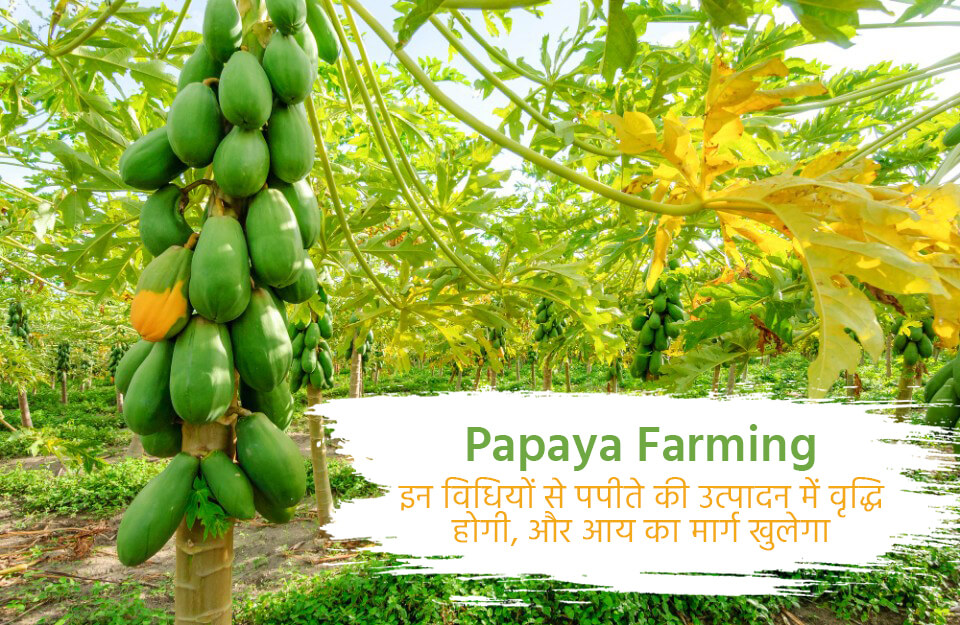
Papaya is a fruit known for its nutritious benefits, widely used from addressing stomach issues to beauty products. Its demand remains consistent throughout the year. Doctors also recommend papaya consumption to patients. Due to these factors, farmers cultivating papaya can earn substantial profits. However, farmers need to keep in mind some essential points to enhance papaya yield. Let's explore how papaya cultivation can be improved.
Typically, papaya plants require nutrient-rich soil. To achieve this, farmers should cultivate crops with green manure (such as dhaincha, sanai, moong, etc.) before planting papaya. Using organic manure, like cow dung, in ample quantity is crucial. Rearing livestock in the fields enhances soil fertility. Additionally, farmers should conduct regular soil testing and provide chemical fertilizers and micronutrients based on the nutritional needs of papaya plants. Boron is essential during fruiting, while potassium and calcium are required during fruit ripening.
Pusa Dwarf Papaya: A highly productive Gynodioecious variety, yielding about 40-45 kilograms per tree. The taste of ripe fruit is sweet with an attractive fragrance.
Sankar Variety: Red Lady 786: Developed by Punjab Agricultural University, Ludhiana, this variety is Gynodioecious. It guarantees fruit production on every plant since only male and female flowers grow on each plant.
Pusa Majesty: Another Gynodioecious variety with high productivity and good storage capacity. It can be grown throughout India, and the yield may reach 35-40 kilograms per tree.
Alongside papaya cultivation, certain companion crops can be sown. Leguminous crops like peas, fenugreek, chickpeas, French beans, and soybeans can be grown with papaya. However, it's important to avoid intercropping papaya with crops like chili, tomatoes, eggplant, ladyfinger, etc., to prevent damage to papaya plants. By adopting these practices, farmers can not only enhance papaya yields but also optimize their profits in papaya cultivation.